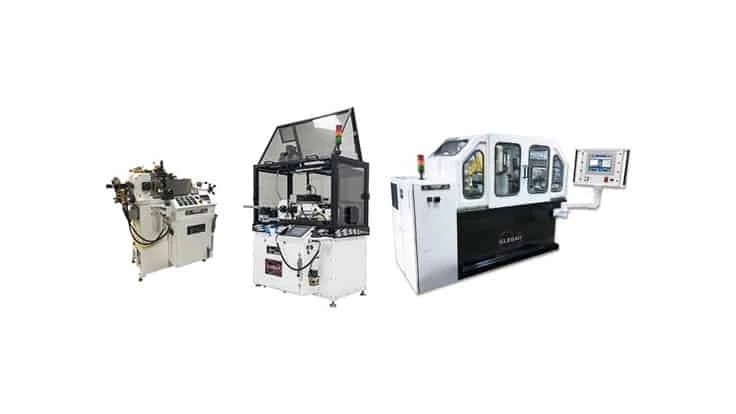
Glebar
Glebar Company reduced lead times and costs for a customer by building a vertically integrated grinding solution. The customer needed a machine that could thru-feed 1-1/2" diameter, 15ft aluminum tubes removing between 0.003" to 0.006" per pass. The second requirement was for the machine to be capable of grinding 8ft steel tubes which featured a 1" diameter bearing surface in the middle which could not be ground. The tubes had a thin wall that needed to be structurally maintained due to strict surface finish requirements. To meet the customer’s requirements, Glebar configured its GT-610 Infeed/Thrufeed Centerless Grinding System tailored to these needs.
The GT-610 was the best choice to meet these requirements because of its rigid granite base, multi-axis controller, fully configurable controls, and 8-5/8" wheel width. The granite base absorbs vibration keeping the machine stable while grinding. The multi-axis controller can position both grinding wheel slides to a 0.1micron resolution. The HMI touchscreen controls are fully configurable, making them operator friendly reducing the amount of training necessary. By using grinding wheels measuring at 8-5/8", the GT-610 grinds efficiently and requires less wheel maintenance.
Glebar develops its own software and programmed a grinding sequence into the controls where the regulating wheel infeeds the part at a controlled rate and initiates the thru-feed process. In combination with Glebar’s vast variety of grinding wheels and grinding experience, they were able to select the proper grinding wheel for this process. The wheel selection was critical to provide efficient cutting action and to reduce heat buildup.
“I’m proud of our engineers for their persistence in developing a great solution,” says John Bannayan, chief technology officer at Glebar. “With our customized programming the machine will run at variable speeds enabling the customer to complete their grind jobs quickly, at a low cost, meeting 100% of the quality requirements.”
Get curated news on YOUR industry.
Enter your email to receive our newsletters.Latest from Today's Medical Developments
- Blum-Novotest opens new Competence Center in Erlanger, Kentucky
- HydroPlasma: The future of surface cleaning in high-tech industries
- Heule partners with Center for Machining Excellence
- Down the road: What really is next for electric vehicles?
- Driving successful medtech innovation
- Last call for July’s medical manufacturing Lunch + Learn!
- Transform What’s Possible with the Okuma MULTUS U3000
- Okuma: Extraordinary Starts Where Limits End






